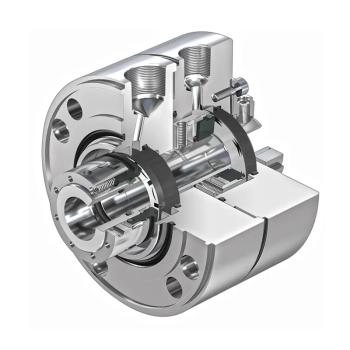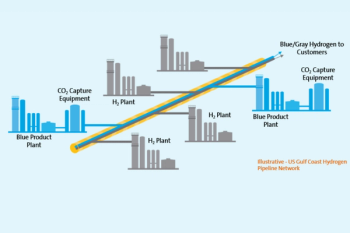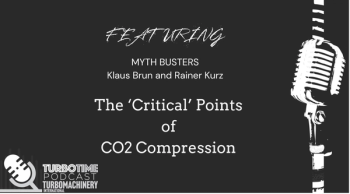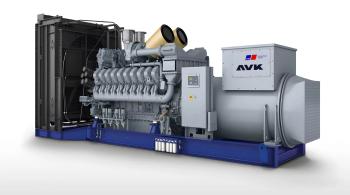
- September/October 2025
- Volume 66
- Issue 5
Hybrid Grid Technology Steps Up for 21st Century Grid Stability and Power Generation
Key Takeaways
- Grid operators must address stability, voltage, short circuit power, and frequency control due to renewable energy integration.
- Hybrid grid solutions, including synchronous condensers and battery energy storage systems, are crucial for maintaining grid reliability.
Flexible solutions such as synchronous condensers and battery storage stabilize power supply and address critical issues like inertia, voltage, and short-circuit power.
Many grid operators are struggling to maintain a reliable and stable power supply. Challenges arise when decommissioning a significant number of coal and gas power plants and replacing them with non-synchronous renewable energy sources, such as wind farms and solar photovoltaic panels. Key issues to address include grid stability, voltage control, short circuit power, and frequency control. A more flexible approach to the grid is needed, utilizing a combination of technologies such as flywheels, battery energy storage systems (BESS), synchronous condensers, static synchronous compensators (STATCOMs), and electrical controls.
“Grid operators in many parts of the world face challenges in maintaining a reliable and stable power supply,” said Andrew Crosby, Solutions Integration Manager, Siemens Energy. “When used in combination, synchronous condensers and BESS benefit the whole system by encompassing voltage support, reactive power, inertia, short circuit power, MW dispatch/operating resource, frequency support, and energy storage.”
THE NEED FOR A HYBRID GRID
Grid stability has never been more important. The loss of steam generators and gas turbines that once dominated the power generation network has led to a shortage of rotating inertia across the system. Consequently, frequency stabilization is essential to replace the inertia provided by rotating assets. Inertia helps balance generation and consumption levels. A drop in frequency occurs if a power plant or wind farm goes offline, for example. Failure to compensate can lead to load shedding and even blackouts.
Voltage stability is also critically important. System operators must maintain close control over voltage levels by balancing real power with reactive power. Real power is what turns on the lights, while reactive power is a necessary component of the electrical power network that flows back and forth between the source and the load without performing useful work. It is measured in volt-ampere reactive (VAR). Dynamic VAR controls are often deployed to help operators ride out voltage events.
And then there is short-circuit power. The grid needs it to maintain voltage reliability and stability during faults such as lightning strikes or equipment failures.
Grid stability services are now in high demand as a response to the onslaught of renewable capacity additions (585 GW of worldwide in 2024) and the AI boom that needs high-powered data centers in the hundreds.
“Regulatory pressure and the introduction of more attractive compensation models are further drivers for the adoption of grid stability services,” said Crosby. “Grid stability services often need incentives, or they can be difficult to finance and deploy.”
GRID STABILITY ALTERNATIVES
In response to this pressing need, a series of grid stabilization solutions has entered the market. Some are brand new, while others are mature technologies that are applicable to the modern grid. Here are a few of the options from Siemens Energy:
SVC Plus: This advanced STATCOM features modular multilevel converter (MMC) technology for voltage regulation and reactive power compensation with rapid response.
Unified Power Flow Controller (UPFC) Plus: Offers dynamic load flow control for grid stabilization and resilience. Operators can use it to control load flow in alternating-current grids in milliseconds and facilitate the increasing integration of renewable energy
Synchronous Condensers: Provide short-circuit power, inertia, and reactive power for dynamic loads. They are available in various sizes, up to 1,300 MVA, at full speed. They consist of a horizontal synchronous generator connected to the high-voltage transmission network through a step-up transformer. The unit is started and stopped by a frequency-controlled electric motor (pony motor) or a starting frequency converter. Once the generator has reached operating synchronous speed, it synchronizes with the transmission network, and the machine operates as a motor providing reactive and short-circuit power to the transmission network. These units are available with and without flywheels, which can supply much-needed inertia and improve frequency nadir.
USING EXISTING ASSETS TO CUT COSTS
As an alternative to purchasing equipment to stabilize the grid, it is increasingly popular to convert existing turbogenerators into synchronous condensers. This represents a way to speed deployment and reduce costs. It can be done in several ways. A basic rotating grid stabilizer conversion (RGS) can be performed if the unit is decommissioned. The power turbine is disconnected and removed, allowing the generator to be converted into a synchronous condenser that supplies much-needed inertia to grids with an abundance of renewable power sources. To add frequency stabilization and added inertia, generators can be extended with additional rotating mass from a flywheel.
For those with unutilized or partially utilized gas or steam turbines, a synchro-self-shifting (SSS) clutch can be installed between the generator and the turbine. Known as a hybrid RGS, it is a good way to improve grid performance while adding flexibility and potentially generating another revenue source. Those wishing to increase inertia even more can include a flywheel coupled to the existing shaft line—a hybrid RGS results in dual-mode operation. The plant can alternate between power generation mode and grid stabilization mode.
“You can add a mechanical clutch between the turbine and generator in order to decouple the generator and use it as a synchronous condenser,” said Crosby.
In a remote area of Queensland, Australia, a Siemens Energy SGT5-2000E gas turbine-based combined-cycle plant is being upgraded to function as a peaking unit, providing backup power to the grid in case of disturbances elsewhere. As part of this RGS conversion, Siemens Energy is implementing minor adjustments to the power train, including a tapered design to accommodate a clutch from SSS Gears Ltd. between the gas turbine and the generator shaft. Replacing the intermediate shaft of the gas turbine with an SSS clutch allows for an instantaneous switch from power generation to synchronous condenser mode.
When in synchronous condenser mode, the RGS unit can provide rotating inertia and short-circuit power without needing to generate power. Its short-circuit contribution will range from 350 to 400 MVA, and its electrical inertia will be approximately 250 MW seconds (MW.s). In power generation mode, it can deliver about 1,000 MW.s. Dual-mode operation allows the facility to remain viable despite reduced revenue from power generation, as it will receive compensation from the state for ancillary services.
In the United Kingdom, power generator Drax is constructing a peaking plant using Siemens Energy SGT-4000F gas turbines with the RGS upgrade.
“These generators will provide both power and inertia services that can be decoupled,” said Crosby. “They will have optional hydrogen co-firing and will receive additional revenue from the grid operator for synchronous condensing services.”
At Highview Power in the United Kingdom, an air turbine will have a clutch and flywheel installed as part of a long-duration energy storage application. This 2.5 GWh liquefied air energy storage plant is due online by 2030.
“Air is stored when needed and then put through a turbine for power,” said Crosby. “When energy from the storage plant isn’t needed, the clutch is used to decouple the turbine and provide stability services.”
The final example is the Shannonbridge plant in Ireland, which will soon become the world’s first hybrid synchronous condenser, flywheel, and battery energy storage plant. It will provide +/-70 MVAR of reactive power, 500 MVA of short-circuit power, and 4,000 MW of inertia, along with 70 MW (140 MWh) of BESS. All of this is supported by several skids of MV switchgear, inverters, transformers, and communication devices, as well as hybrid controls to manage everything.
“When used in combination, synchronous condensers and BESS benefit the whole system by encompassing voltage support, reactive power, inertia, short circuit power, MW dispatch/operating resource, frequency support, and energy storage,” said Crosby. “There are commercial advantages in sharing the same grid connection point, site infrastructure, media supplies, redundant auxiliaries, and control and protection equipment.”
Drew Robb is a freelance writer specializing in engineering and technology. Email Drew at drew@robbeditorial.com.
Articles in this issue
about 2 months ago
Myth: High-Speed vs. Low-Speed Balancingabout 2 months ago
Steam Turbine Optimization for Mechanical Drive Applications – Part 1about 2 months ago
Turbomachinery International: September/October 2025Newsletter
Power your knowledge with the latest in turbine technology, engineering advances, and energy solutions—subscribe to Turbomachinery International today.





